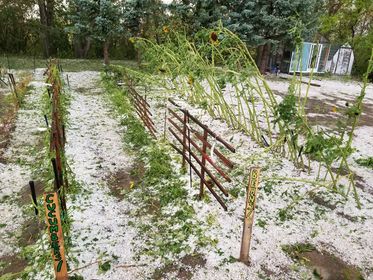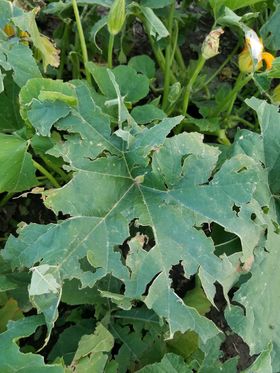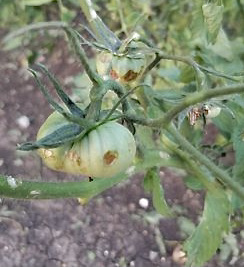
Coping with hail damage
Don't despair - all may not be lost

Prairie folks know that storms can pop up quickly and can produce hard rain, wind and worse - hail. If you get hail damage in your garden, take a deep breath and don’t despair. You don’t have to pull out all of your plants – most can be salvaged.
Start by picking up and removing debris that is not attached to your plants. Keep as much foliage as you can – even if there are minor tears or damage. Any green leaves attached to plants are photosynthesizing and this will help your plants recover. As new foliage emerges, remove more of the damaged parts. Keep plants well-watered and mulched to reduce stress.
Vegetables

If leaves and stems are intact, keep them even if they are tattered or torn. Give plants a chance to grow. You have the advantage of well-developed root systems which may bounce back. Keep watered and lightly fertilize.
If your fruits got damaged (punctures or other wounds), harvest them right away as the damaged areas will be open to bacterial infection. Trim off the damaged areas and consume right away or freeze for later.
If you have big gaps in your garden, buy a few annuals to fill the holes, or try planting some short season crops like radishes, lettuce or other leafy greens.
Perennials and annuals

Clean up debris and keep any green leaves intact even if they are torn or tattered. Deadhead spent flowers. Cut back plants carefully – some will grow back and regenerate, but some may not. Do not fertilize.
Trees
Hail can do a lot of damage to trees: stripping leaves, damaging fruit and breaking branches.
Safety first – remove debris and assess potential dangers like broken limbs and branches. Make clean cuts on broken or torn limbs. Call an arborist for big jobs. Do not remove branches that have lost their leaves as new growth may emerge. Do not apply wound paint or fertilize.

